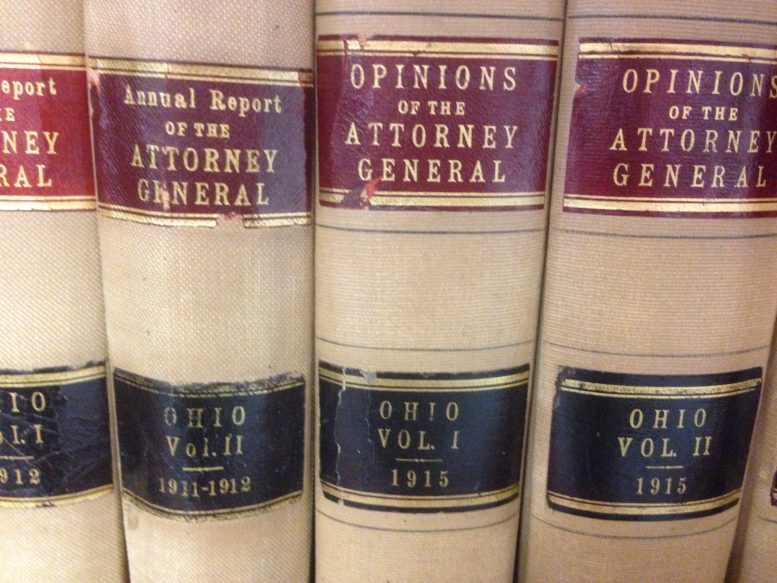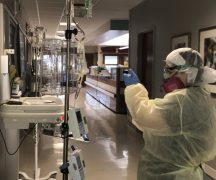By Susan Tebben
There is no amount of money that can keep Jessica Simpkins from replaying the images of her rape at the hands of a church pastor.
But having a law in place that protects her and other survivors of sexual violence would help, she said on Tuesday.
“They need to look at the victim, look at the story, and…victims need to be protected instead of the predators,” Simpkins said during a discussion led by progressive nonprofit ProgressOhio.
Simpkins was the subject of an Ohio Supreme Court case which ultimately decided it was constitutional to put a limit on civil damages that could be given to victims in cases such as hers.
Simpkins’ assailant, Brian Williams, formerly a senior pastor at Sunbury Grace Brethren Church, was convicted of two counts of sexual battery and sentenced to two four-year prison terms, according to court documents.
But when it came to a civil lawsuit asking for $3.5 million in damages for Simpkins, an appeals court and the Ohio Supreme Court agreed that it should be reduced to $500,000, due to the tort reform enacted in 2005.
Tort is the legal term for an infringement on rights that can lead to a civil lawsuit, usually to obtain monetary relief.
The 2005 law divided the amount of damages that could be awarded by a jury into “economic” and “noneconomic.” Noneconomic losses — such as “pain and suffering” or “mental anguish” — were capped at $350,000 for each plaintiff and each occurrence in the lawsuit.
Those caps do not apply in cases where the loss was caused by “permanent and substantial” physical injuries.
The Ohio Supreme Court, led in the majority opinion by Justice Judith L. French, cited the law, which calls noneconomic losses “inherently subjective and easily tainted by irrelevant considerations.”
French wrote that despite a psychologist’s testimony that Simpkins suffered from post-traumatic stress disorder and depression due to the sexual assault, and the fact that “played basketball in high school and college, got good grades in college, is currently employed full-time, has not sought or participated in mental health treatment or counseling since 2008 (the time of the assault), and does not have current plans to seek treatment,” the noneconomic injuries did not meet the qualifications required to lift caps on the damages.
“Since I could play basketball and go to school and have friends, Justice French assumed it didn’t affect my life because I could fulfill a normal life,” Simpkins said on Tuesday.
With the Ohio Supreme Court agreeing with the appeals court, Simpkins was awarded the $350,000 maximum allowed under the tort reform law, plus $150,000 for future economic damages.
In writing against the decision of the majority of supreme court justices, Justice Paul Pfeifer said the tort reform was meant to protect doctors and corporate interest, causing “unintendent consequences.”
“It turns out that ‘tort reform’ (and the justices who sanctioned it) also ensured that rapists and those who enable them will not have to pay the full measure of the damages they cause — even if they rape a child,” Pfeifer stated in his dissent.
He called for another look at the tort legislation put into law in 2005.
“It is past time for the General Assembly (and this court) to reconsider ‘tort reform’ and return the authority to determine damages to juries, where it rightfully and constitutionally belongs,” Pfeifer wrote.
With that in mind, state Rep. Kristin Boggs, D-Columbus, said she plans to bring back legislation that has been introduced in two different cycles of the General Assembly.
“The General Assembly has a duty to make clear that these caps on damages should not be applied to survivors of sexual violence,” Boggs said during the Tuesday call.
In House Bill 515, Boggs said the tort law would not change as it relates to unintentional claims or claims of negligence, but would exclusively change to benefit survivors of sexual violence. With a majority Republican House, Boggs said she is seeing an “extraordinary amount of pushback for this legislation.”
“If I’m being candid, I don’t have a lot of hope that this General Assembly, the people who are leading this General Assembly, are prioritizing this issue and considering it from a survivors’ point of view,” Boggs said. “I don’t see this being presented for a floor vote for a very, very long time.”
State Rep. Bill Seitz, who was a part of the tort reform in 2005, spoke up against a similar bill that Boggs introduced in the previous General Assembly. He said the cap wouldn’t apply to perpetrators, and that removing the cap wholesale would open the door to more and more reasons to lift the cap.
That bill never moved past the first hearing in February of 2017.
***
Also from Ohio Capital Journal:
Ohio approved for $717M in federal pandemic unemployment supplement
The federal government has approved a $300-a-week supplement for unemployed Ohioans, Lt. Gov. Jon Husted said on Tuesday. He added that people should start receiving the funds before the end of the month.
Given the amount the state is receiving — $717 million — and assuming that about 500,000 Ohioans are eligible, that’s enough for just under five weeks’ worth of benefits.
Federal policymakers have been struggling to come up with a coronavirus-related unemployment supplement since an earlier, $600-a-week one expired at the end of July. READ MORE
Senate GOP emergency relief plan leaves out direct aid to states
WASHINGTON — Senate Republicans unveiled their latest coronavirus relief proposal Tuesday but were met with swift objections from Democrats.
The GOP plan failed to include direct aid to cities and states, a priority for Democrats, or rental relief or nutrition assistance, and it appeared it wouldn’t go far enough to resolve a monthslong stalemate over providing additional emergency aid to Americans. The Senate plans a vote later this week.
The $500 billion GOP package includes enhanced unemployment benefits, another round of federal small business loans, and billions of dollars to help schools and universities reopen safely.
It would also boost COVID-19 testing, contact tracing, treatments and vaccine development; and help the U.S. Postal Service accommodate an expected surge of mail-in ballots this fall. READ MORE





